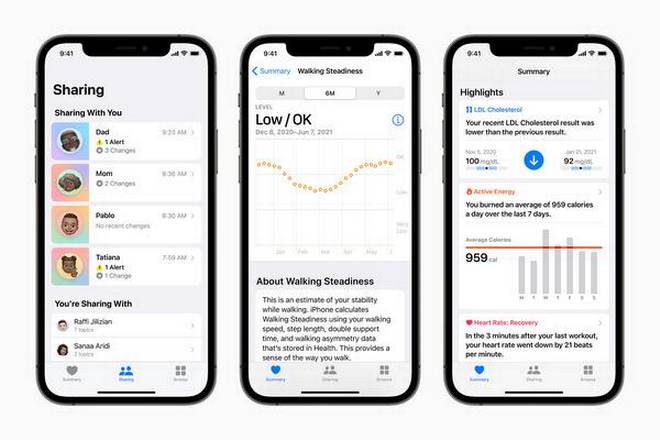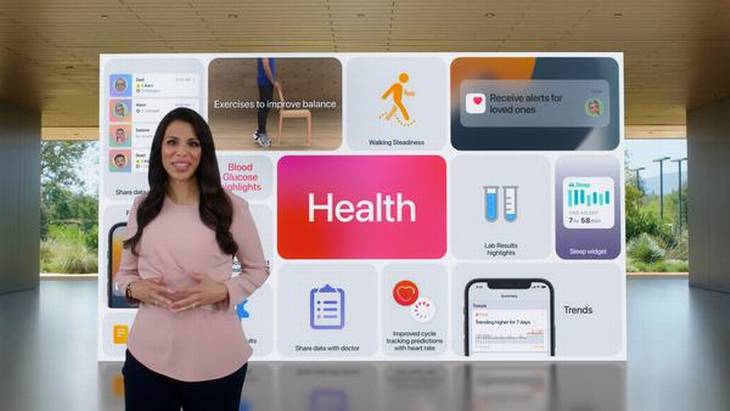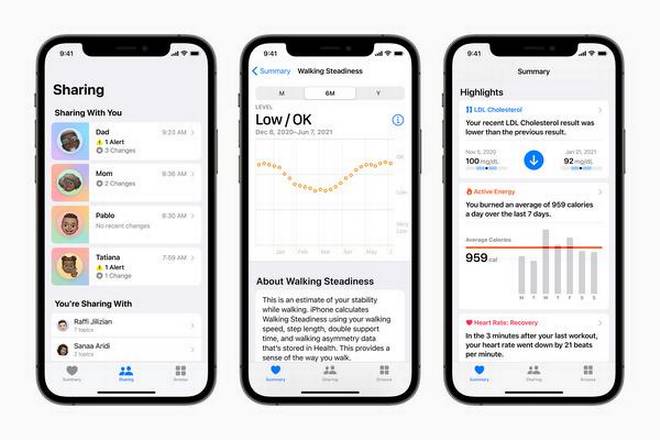
This year’s Apple Worldwide Developer Conference brimmed with announcements for just the Health app alone. One of its new features is a new Sharing tab in the native Health app letting users privately share their data with a trusted partner or caregiver. This is indeed part of the company’s long-term journey to become synonymous with health-tech.
The Sharing feature seems to be a ‘data engager’, enabling those looking for specialised care or support to build a stronger, more informed support system in the health space. That said, the possibilities are endless: it could be an aging parent sharing their Activity and Heart health data with their family members, or a partner sharing their fertility window insights for family planning.
Apple’s Vice President of Health Dr Sumbul Desai speaks with The Hindu about the new feature ‘Health Sharing’. “For many of us, it’s not only tracking our own health that we care about. It’s the health of our family and loved ones, too, whether they live with us or far away,” says Dr Desai, “To empower our users to build a more informed support system on their health journey, we are introducing a new way for users to choose to share their health data in a secure and private way with loved ones.”
Community relevance
In India, the ‘sandwich generation’ (the age group of 40s to 50s caring for their parents and their children) and joint family set-ups are more common than ever, so more people may need access to relatives’ health data wherever they are
That said, users can choose to share any of the over 100 data types. When setting up sharing, users will be guided through an on-boarding to help narrow down relevant health data to share, along with suggested data categories where users have data from the last six months. Users can also choose what health alerts to share.

The shared data should be presented in a comprehensive way. For example, trends are highlighted to help users make sense of their health data and how it may be changing over time. Users can also choose to receive notifications when a new trend has been detected about their family member’s data. The trend algorithms are built to look at both shorter and longer-term trends by looking at a given data type across one-month and six-month time intervals.
Easy communication about the shared health data is key to the experience as well. Users can look forward to a trend in messages to inform discussions with loved ones about their health. Embedding those communication tools into the health sharing tab makes it easy to reach out to check in or offer support and encouragement.
As more kids start using smartphones, there is a different potential for Health Sharing. Dr Desai points out, “For some people, the health of their kids is top of mind, for others it’s aging parents. And then there is the ever growing generation of those taking care of both. For example, if my mother chooses to share with me, I have the ability to see if there have been any changes in her health data. If I see a noteworthy change, like her resting heart rate increasing, I can simply tap Messages and start a conversation with my mom.”
Dr Desai assures Apple’s privacy measures will be upheld in Health Sharing, explaining, “Privacy is fundamental to the design and development of our features. It’s a central tenet at Apple; users won’t have to sacrifice their own privacy in order to access their health data or share it.”


















